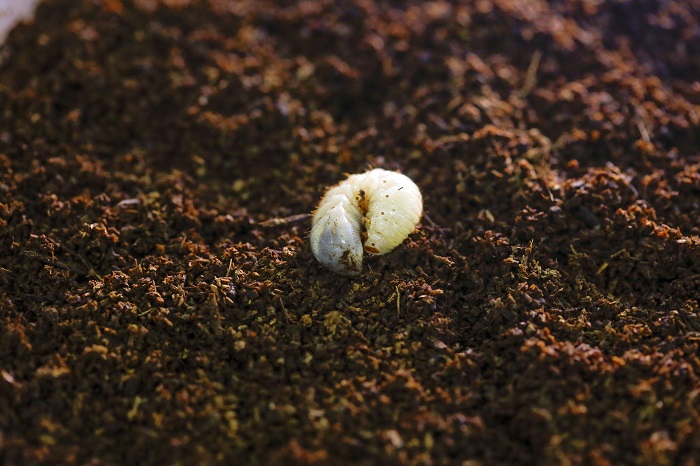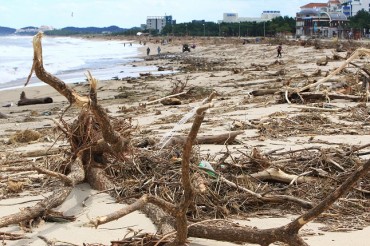
Protaetia brevitarsis seulensis, more commonly known as white grubs, are said to improve liver function, remove extravasated blood, and clean the blood. (image: GNARES)
JINJU, Feb. 27 (Korea Bizwire) — Gyeongsangnam-do Agricultural Research and Extension Services (GNARES) announced on Tuesday that had developed a low-cost food source to reduce the production cost of larvae of Protaetia brevitarsis seulensis, an edible insect, and had started to increase the competitiveness of farming the larvae by supplying the low-cost food to farmers.
Protaetia brevitarsis seulensis, more commonly known as white grubs, are said to improve liver function, remove extravasated blood, and clean the blood.
In addition, animal experiments have revealed that indole alkaloids extracted from the grubs have the effect of healing blood clots and improving blood flow, drawing attention as a new food and medicinal source.
White grubs typically consumer oak sawdust, for which demand continues to grow, but inadequate supply has resulted in price increases.
In particular, since the feed accounts for 32 percent of the breeding cost, finding a lower cost food source was critical to ensure the financial viability of white grub farming.
GNARES explained that it fed white grubs the by-product of mushroom plantations instead of oak sawdust. As a result, total food expenses decreased by 78 percent.
When fed with the culture medium instead of oak sawdust, the weight of grubs increased by 24 percent, and the harvest period decreased by five days.
GNARES plans to actively distribute the newly developed feed through consultations with farming households, as the new feed can effectively reduce feed costs and ensure the healthy growth of the grubs without insect pests.
M. H. Lee (mhlee@koreabizwire.com)






